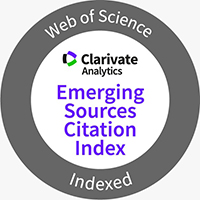Colovesical fistula in morbus Crohn, diagnostic and management challenges: a case report
DOI:
https://doi.org/10.3941/jrcr.5534Abstract
ABSTRACT
Introduction: Colovesical fistula secondary to Crohn’s disease is a rare complication and very challenging to diagnose. The causes of the formation of enterovesical fistulas are intestinal diseases occurring within the intestinal loop adjacent to the wall of the urinary bladder resulting in pathological communication between the above structures. Mainly diagnosis is made clinically but there are other diagnostic tools that help and can confirm the disease.
Case Presentation: In our case we present 81-year-old men with abdominal pain, pneumaturia and fecaluria. Based on diagnostic tools that we used, we confirmed the fistula between sigmoid part of the colon and bladder and was successfully treated with open laparotomy. The patient on 6-month follow-up is doing well with no signs of recurrence.
Discussion: Colovesical fistula, a pathological communication between bladder and colon is not a common condition (1). It is a very challenging condition to diagnose and treat. Between conservative and surgery management the latter is preferred option because the probability of fistula to close from conservative treatment is very low, so the definitive treatment remains the surgery.
Conclusion: Enterovesical fistula diagnosis is complex, requiring proper investigation through good anamnesis, cystoscopy, retrograde cystography, CT scan, and colonoscopy are crucial to confirm the diagnosis and surgical successfultreatment.
Keywords: Colovesical fistula, Crohn’s disease, cystoscopy, colonoscopy, CT, enterectomy

Downloads
Published
Issue
Section
License
Copyright (c) 2025 Journal of Radiology Case Reports

This work is licensed under a Creative Commons Attribution-NonCommercial-NoDerivatives 4.0 International License.
The publisher holds the copyright to the published articles and contents. However, the articles in this journal are open-access articles distributed under the terms of the Creative Commons Attribution-NonCommercial-NoDerivs 4.0 License, which permits reproduction and distribution, provided the original work is properly cited. The publisher and author have the right to use the text, images and other multimedia contents from the submitted work for further usage in affiliated programs. Commercial use and derivative works are not permitted, unless explicitly allowed by the publisher.





